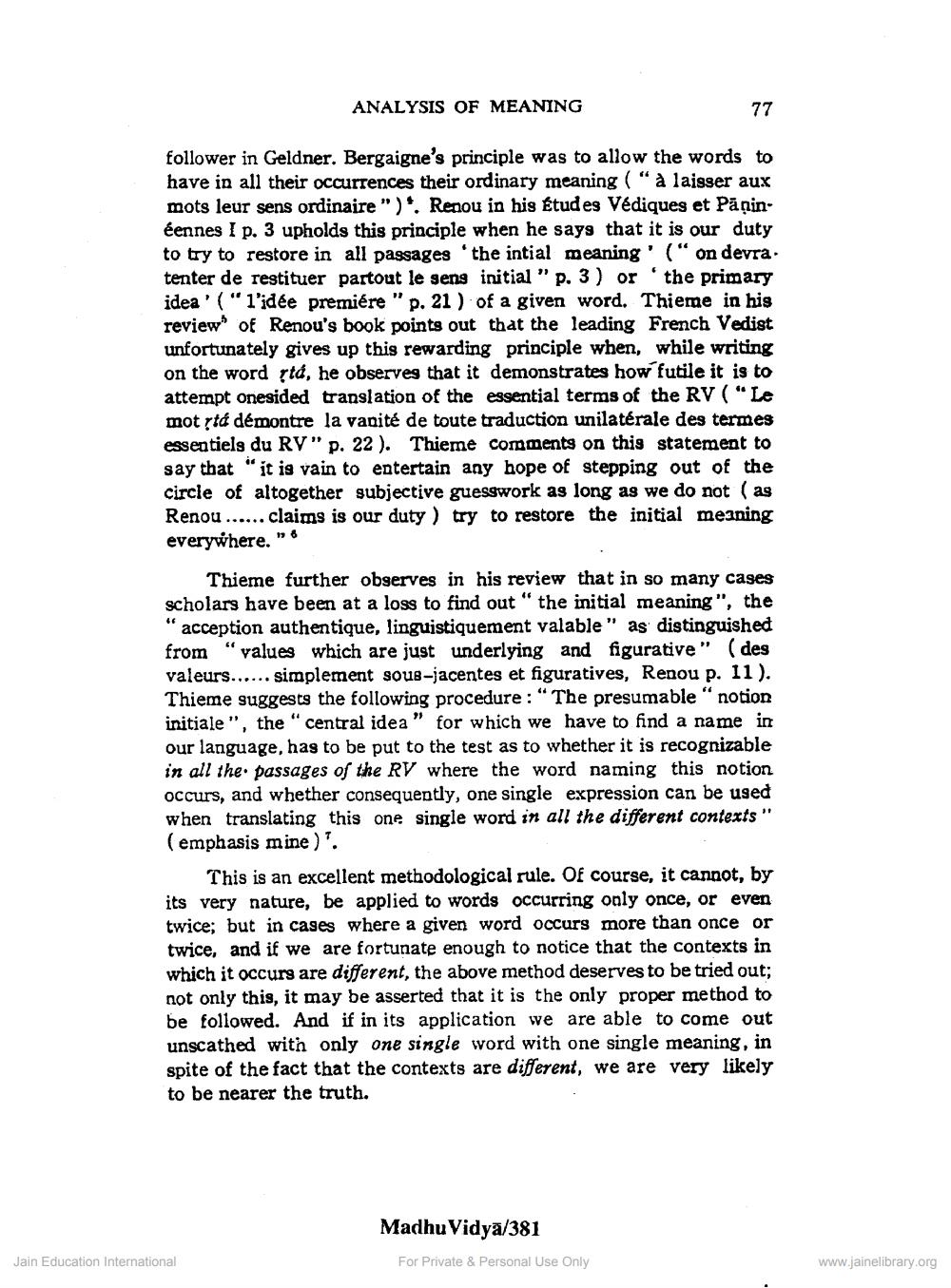________________
ANALYSIS OF MEANING
follower in Geldner. Bergaigne's principle was to allow the words to have in all their occurrences their ordinary meaning ("à laisser aux mots leur sens ordinaire"). Renou in his Étud es Védiques et Pāņinéennes I p. 3 upholds this principle when he says that it is our duty to try to restore in all passages 'the intial meaning' (" on devra. tenter de restituer partout le sens initial " p. 3) or 'the primary idea' ("l'idée premiére " p. 21 ) of a given word. Thieme in his review of Renou's book points out that the leading French Vedist unfortunately gives up this rewarding principle when, while writing on the word stá, he observes that it demonstrates how futile it is to attempt onesided translation of the essential terms of the RV ("Le mot ytá démontre la vanité de toute traduction unilatérale des termes essentiels du RV" p. 22). Thieme comments on this statement to say that "it is vain to entertain any hope of stepping out of the circle of altogether subjective guesswork as long as we do not (as Renou ...... claims is our duty ) try to restore the initial meaning everywhere."
Thieme further observes in his review that in so many cases scholars have been at a loss to find out " the initial meaning", the "acception authentique, linguistiquement valable" as distinguished from "values which are just underlying and figurative" (des valeurs...... simplement sous-jacentes et figuratives, Renou p. 11). Thieme suggests the following procedure : "The presumable" notion initiale", the central idea" for which we have to find a name in our language, has to be put to the test as to whether it is recognizable in all the passages of the RV where the word naming this notion occurs, and whether consequently, one single expression can be used when translating this one single word in all the different contexts" (emphasis mine) ?.
This is an excellent methodological rule. Of course, it cannot, by its very nature, be applied to words occurring only once, or even twice; but in cases where a given word occurs more than once or twice, and if we are fortunate enough to notice that the contexts in which it occurs are different, the above method deserves to be tried out; not only this, it may be asserted that it is the only proper method to be followed. And if in its application we are able to come out unscathed with only one single word with one single meaning, in spite of the fact that the contexts are different, we are very likely to be nearer the truth.
Madhu Vidya/381
For Private & Personal Use Only
Jain Education International
www.jainelibrary.org




